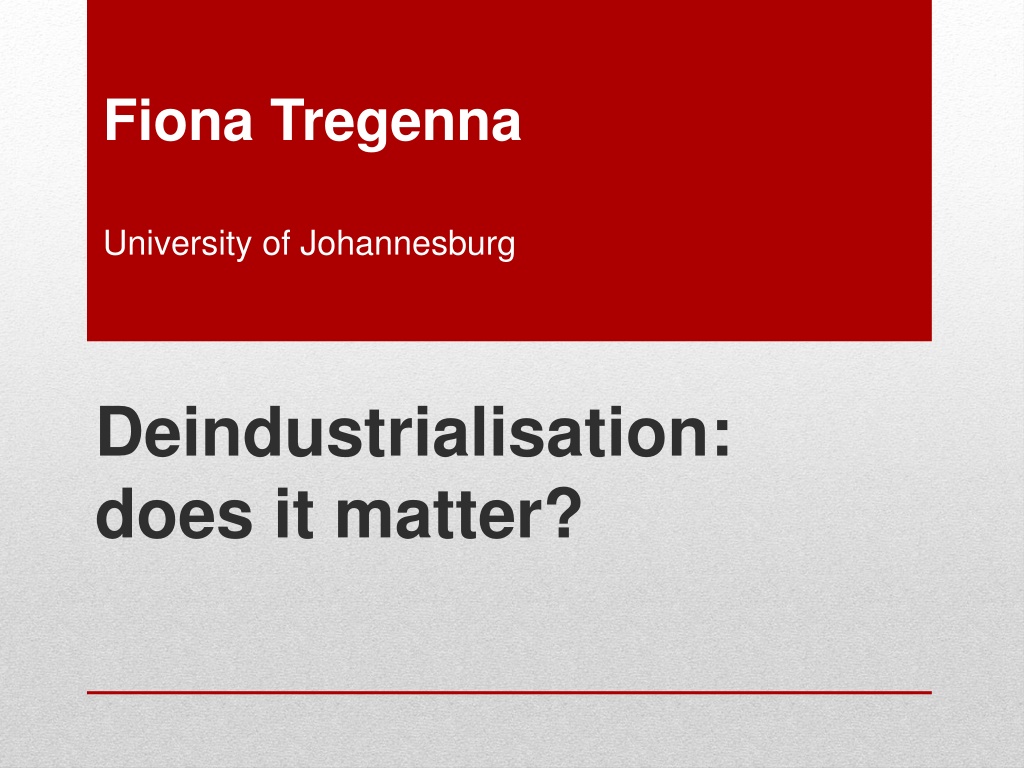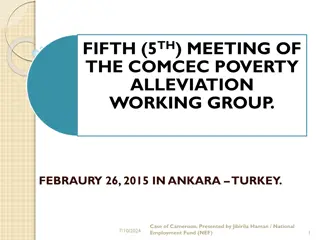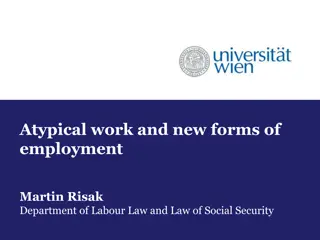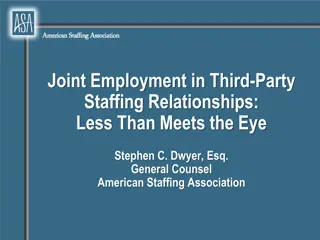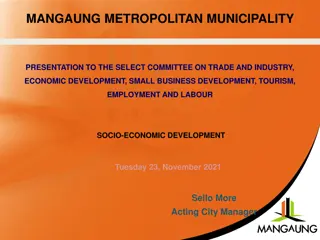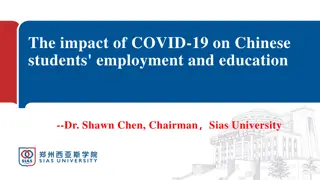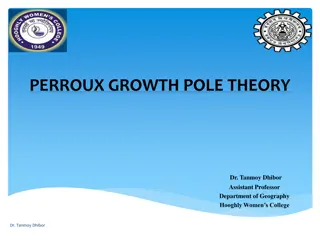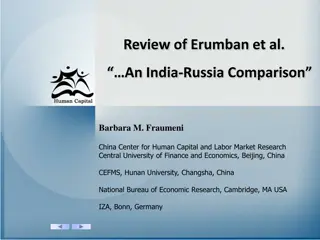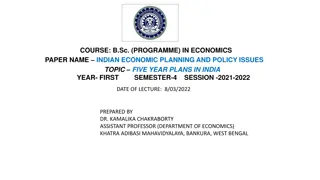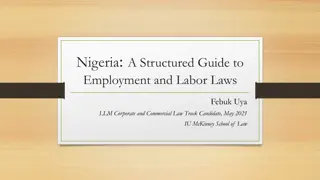Understanding the Impact of Deindustrialisation on Economic Growth and Employment
Deindustrialisation poses challenges and complexities that significantly impact economic growth, employment, and societal well-being. This article delves into the various facets of deindustrialisation, highlighting its effects on different sectors, job quality, poverty levels, and trade unions. It explores the importance of manufacturing in driving growth and the need to measure and define deindustrialisation accurately to formulate effective strategies for mitigating its negative consequences.
Download Presentation

Please find below an Image/Link to download the presentation.
The content on the website is provided AS IS for your information and personal use only. It may not be sold, licensed, or shared on other websites without obtaining consent from the author. Download presentation by click this link. If you encounter any issues during the download, it is possible that the publisher has removed the file from their server.
E N D
Presentation Transcript
Fiona Tregenna University of Johannesburg Deindustrialisation: does it matter?
Does deindustrialisation matter? Yes! But complexities and caveats! Why deindustrialisation matters For growth; for employment and distribution; politically Complexities and caveats How to define/measure deindustrialisation Heterogeneity of deindustrialisations Outsourcing statistical illusion of deindustrialisation Sectoral heterogeneity Sector-specificity vs. activity-specificity
Why deindustrialisation matters (i) View that sectors have important common characteristics that are relevant for growth. A job or unit of value added has different effects on growth depending on which sector it is in. Kaldorian and Structuralist approaches manufacturing has special role as engine of growth stronger intersectoral linkages greater scope for cumulative productivity increases role in technological advancement balance of payments fairly strong empirical evidence internationally. deindustrialisation expected to negatively affect growth.
Why deindustrialisation matters (ii) Manufacturing jobs typically better quality wage levels, benefits, job security, protection of labour rights, degree of unionisation etc. International evidence negative effects of deindustrialisation on poverty, inequality, health, family and community cohesion. Effects of deindustrialisation on trade unions and working class political organisation.
How to define/measure deindustrialisation What counts as deindustrialisation? Special properties of manufacturing operate through both output and employment. Manufacturing output and employment can change in different magnitudes or even directions. Empirical analysis of changes in manufacturing output and employment in 28 countries, 1985-2005.
Decomposition of changes in level of manufacturing employment: 1985-1995 and 1995-2005 200 + sector growth effect + labour intensity effect In most cases, manuf. grew but became less labour-intensive + sector growth effect - labour intensity effect Malaysia y-axis: sector growth effectchange in level of manuf. VA to grow while becoming more labour-intensive Thailand manuf. Developing Asia: strong VA AND productivity growth; far from origin employment associated with change in level Rare for manuf. Korea 1985-1995: (-89; 126) Indonesia Net employment growth in most developing countries Korea = 37% increase 120 Singapore * y=x line Chile Costa Rica Latin America (+ SA & Philippines!) India Bolivia Net employment loss in most developed countries Taiwan Colombia Philippines 40 Sweden Mexico USA Spain Peru Hong Kong Brazil Japan South Africa UK Ven Denmark Italy x-axis: labour-intensity effect change in level manuf. employment associated with change in labour-intensity of manuf. [1/productivity] - labour intensity effect -100 -50 0 y=x line - sector growth effect - sector growth effect + labour intensity effect -40
Decomposition of changes in share of manufacturing employment: 1985-1995 and 1995-2005 y=x line + sector share effect - labour intensity effect strong growth in manuf. GDP share AND productivity; far from origin Developing Asia: change in share manuf. employment associated with change in share of manuf. in more labour- intensive y-axis: sector share effect + sector share effect + labour intensity effect 7 Malaysia Rare for Korea manuf. share to grow while becoming Sweden Thailand Singapore Indonesia GDP change in share manuf. employment India * associated with change in labour- intensity of manuf. Costa Rica Bolivia Mexico Peru USA 0 Costa Rica Brazil x-axis: labour-intensity effect Japan -20 -10 0 SA Colombia Venezuela UK1985-1995: (-7.3; 1.2; 4) = 37% increase + sector share effect - labour intensity effect Taiwan Chile Spain UK - sector Denmark Latin America (+ SA & Philippines): manuf. less productive and shrinking GDP share; close to origin Italy share effect + labour intensity effect -7
Conclusions from decompositions Deindustrialisation associated with falling labour-intensity very different from that associated with falling manufacturing output. These are likely to have different causes and implications for growth, and require different policy interventions. Deindustrialisation driven by rising manufacturing productivity, while manufacturing output expands, not pathological. Analysis of deindustrialisation needs to look at trends in both output and employment. To promote manufacturing employment, better to grow VA than to promote labour-intensity.
Statistical illusion of deindustrialisation? How much of deindustrialisation (fall in manufacturing employment) is a statistical illusion due to outsourcing? E.g. outsourcing of factory cleaners to a cleaning company New methodology for estimating intersectoral outsourcing. Applied to cleaners and security guards in South Africa. Significant employment categories (6.7% of total employment). Account for 44% of services employment growth 2001-2007.
Results from empirical analysis outsourcing About a fifth of total growth in private services employment (2001-7) can be accounted for by outsourcing of cleaners and security guards. Accounting for cleaners and security guards, sectoral employment growth rates (2001-7) can be adjusted : Actual 1.36% 1.63% Projected 1.55% 1.35% Manufacturing Private services These are projections, may underestimate degree of outsourcing.
Implications of outsourcing results Strong statistical illusion element to apparent deindustrialisation in SA (2001-2007). Still, longer-term deindustrialisation trend. Services employment not as dynamic as commonly believed. Sustainability... Neither occupation very progressive in terms of productivity. Important for labour absorption... but not as engines of growth.
Sectoral heterogeneity Considerable intra-sectoral heterogeneity. Activities within some sectors play completely different roles in the economy and in growth. Services especially heterogeneous (e.g. finance vs. domestic work vs. education). Implies that deindustrialisation has very different character and implications depending on which activities within sectors are shrinking and growing. E.g. financialisation vs. high-tech tradable services vs. retail vs. informal services etc.
Activity-specificity Two dimensions of activity-specificity: Sectoral Technological-organisational. These two dimensions not completely independent. In general, the distinguishing features of manufacturing are relatively conducive to higher technological-organisational advancement. Growth is both sector-specific and activity-specific. Analysis of deindustrialisation based only on sectors is limited & potentially misleading.
Distinguish 2 forms deindustrialisation Sector Manufacturing Mining & Agriculture Services Type FORM II DEINDUSTRIALISATION: a shift from manufacturing to other surplus-value-producing activities Productive of surplus-value FORM IDEINDUSTRIALISATION: a shift from manufacturing to non- surplus-value-producing activities Not productive of surplus-value
Conclusions and implications Deindustrialisation does matter and should concern policymakers. But also pay attention to: Trends in manufacturing output as well as employment; shares as well as levels. Productivity dynamics and what is driving deindustrialisation. How much of apparent deindustrialisation is genuine structural shift, not just a statistical illusion from outsourcing. What is the nature of the (relatively) shrinking and expanding activities. Growth effects complex and contingent. Deindustrialisation can be influenced by policy.
